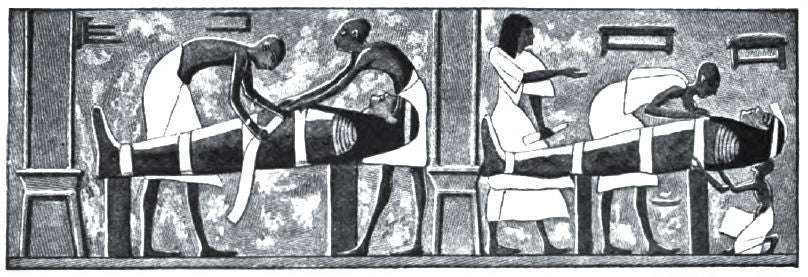A History of Linen and How it is Made
Posted: Sep 25 2013
 Linen is the most ancient of fabrics, with a rich and romantic heritage. Its widely accepted birth as a textile was in Egypt some 10,000 years ago but there is evidence found in pre-historic caves in Georgia that suggests it might have been used as a textile some 36,000 years ago. But let’s start with what we know and as with most things in the fabrics/textiles industry that means starting in Egypt.
Linen is the most ancient of fabrics, with a rich and romantic heritage. Its widely accepted birth as a textile was in Egypt some 10,000 years ago but there is evidence found in pre-historic caves in Georgia that suggests it might have been used as a textile some 36,000 years ago. But let’s start with what we know and as with most things in the fabrics/textiles industry that means starting in Egypt.
Carbon-dating has proved that linen was used as clothing in Egypt dating back to 8,000 BC. It was prised for its ability to remain cool and fresh in warm weather. Linen is a fibre made from the flax plant, or more accurately, from the cellulose fibres that grow inside of the stalks of the flax plant. The flax plant grows on a yearly cycle and does not require a great deal of water or maintenance. This made it perfect for Egyptian farmers. The yearly flooding of the Nile provided enough water and nutrients to germinate the flax seeds, which then required intermittent watering for the next 100 days. Ancient Egyptian linen, although coarse compared with modern linen, was used for clothing, currency, furnishings, decorations and most famously as the burial garment for mummies.

Modern day linen is still made much the same as it was back in the days of Ancient Egypt. The first step in making a linen textile is threshing, which is the process used to remove the seeds. Not all farmers do this as it means waiting for the seeds to grow on the plant. The fibres are actually worth more before the seeds are ready as the nutrients are still inside the plant, making for better fibre. But for those that do, the plant is allowed to dry for several weeks and is then thrashed in order to break the seed pods and collect the seeds for the next season.
Retting, or steeping, is the process of removing the actual fibre from inside the flax plant stalk. The plant is exposed to varying amounts of water, depending on the process used, in order to break down the cells inside the plant, allowing for long, unbroken fibres to be collected.

1. Water retting is the most commonly used practice and usually results in the highest quality fibres. The bundled flax plants are weighted down and left in stagnant or slowly-moving waters, such as ponds, bogs and streams. As a rule, the more stagnant the water source, the faster the retting process and depending on water temperature, can take anywhere from a few days to a few weeks. Stream retting, although slowest, is usually preferred as it creates cleaner fibres.
2. Tank retting is often fastest as the water is completely stagnant. Large cement vats are used because the acidic waste from the plants is usually so corrosive it eats through metal. The flax stalks are soaked for 4-8 hours to remove dirt and pigment, the water is changed and the bundles allowed to soak for 4-6 more days. The only issue with this method is the proper, or more often improper, disposal of the sullied water that can be particularly harmful to people and animals if mixed into the water supply.
3. Dew retting is the preferred method in areas where water sources are limited or when a greater importance is placed on a low environmental impact. Flax stalks are laid evenly on flat turf, where the combination of air, sun, and dew causes the stems to dissolve within 2-3 weeks. Dew-retted fibres, although environmentally friendly, are typically of poorer quality and darker pigment than water retted fibres.
After retting the fibres are allowed to dry. Then they are scutched which breaks down any remaining wood from the stem and removes it, and combed or heckled in order to separate the short and long fibres. As with all things textile, the short fibres are usually coarser and less valuable. Longer fibres tend to be better quality and end up making smoother and softer fabric. Once the fibres have been fully processed they can be spun into yarn and then milled into fabric.
Why not take a look at our range of linen here (shirting) and here (suiting), or find out what makes it so special!










